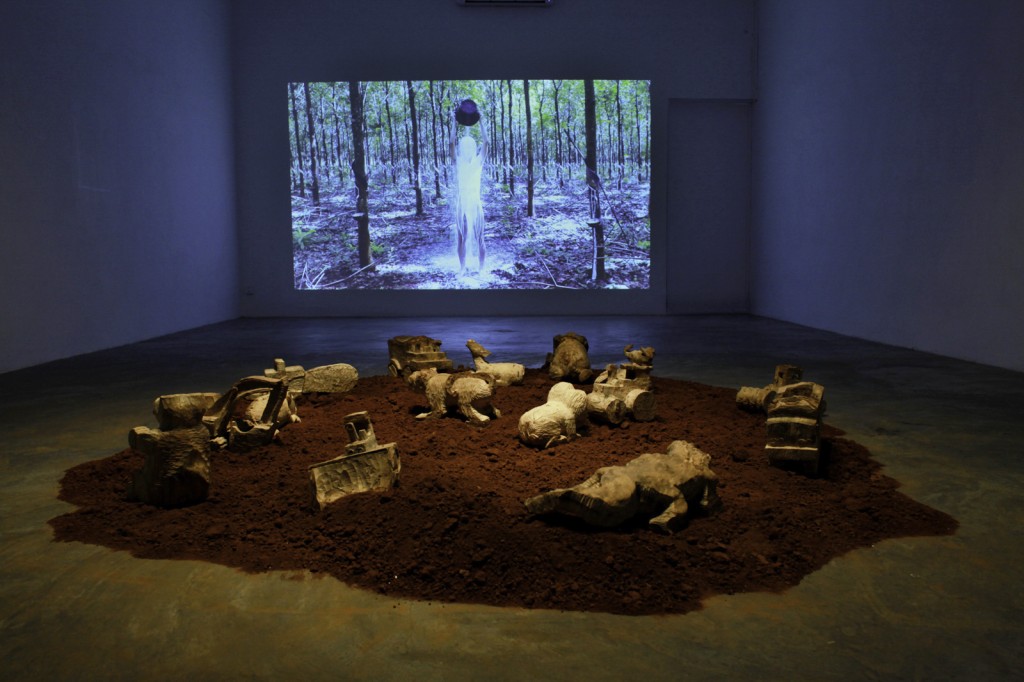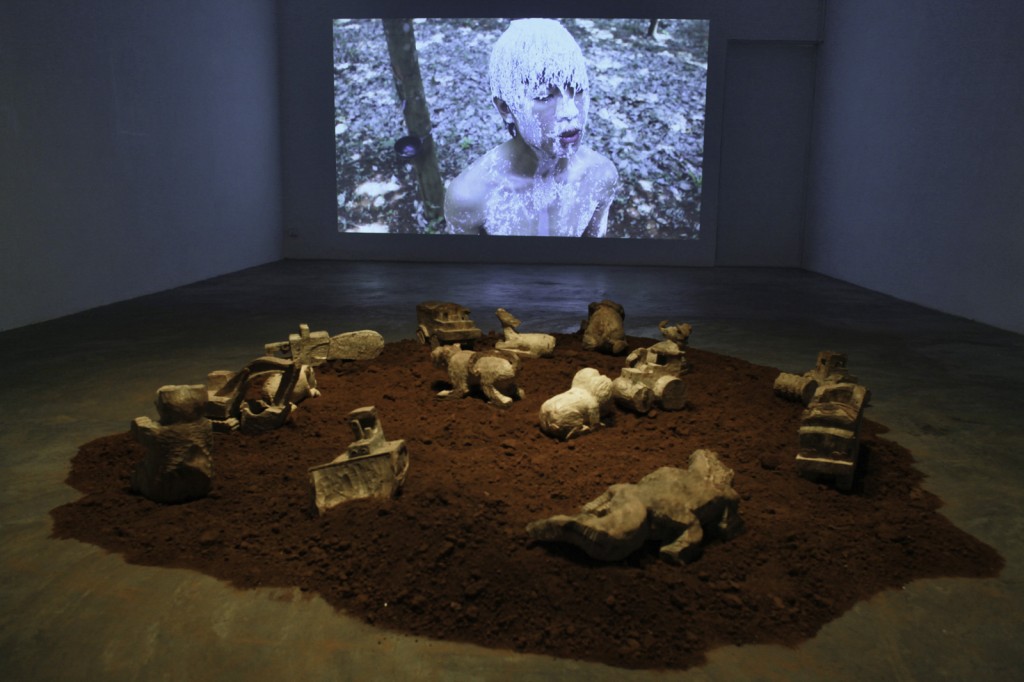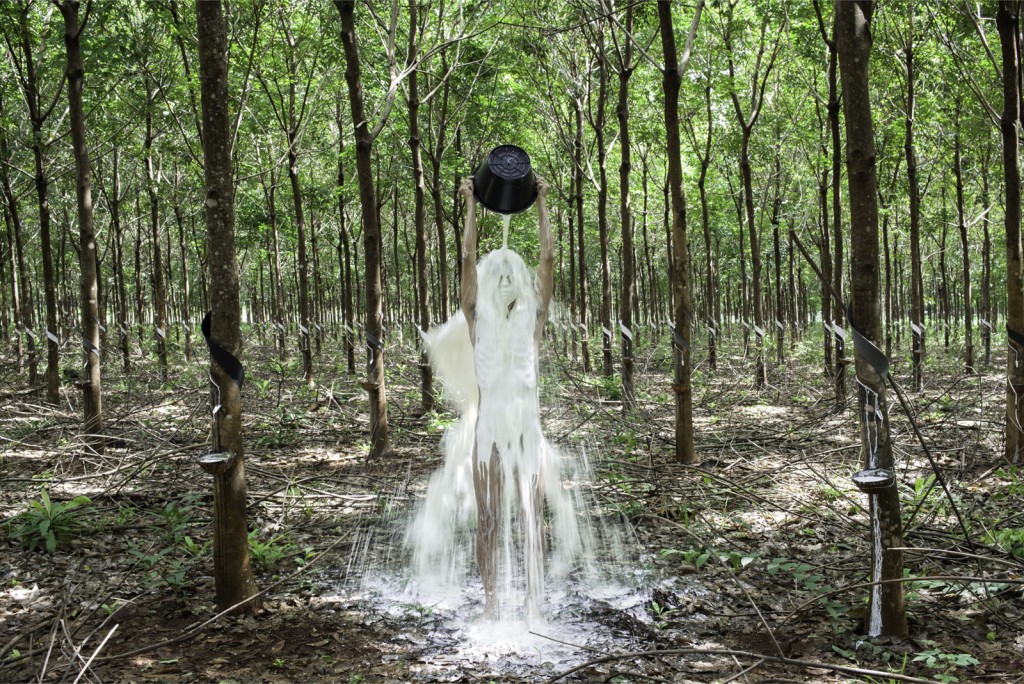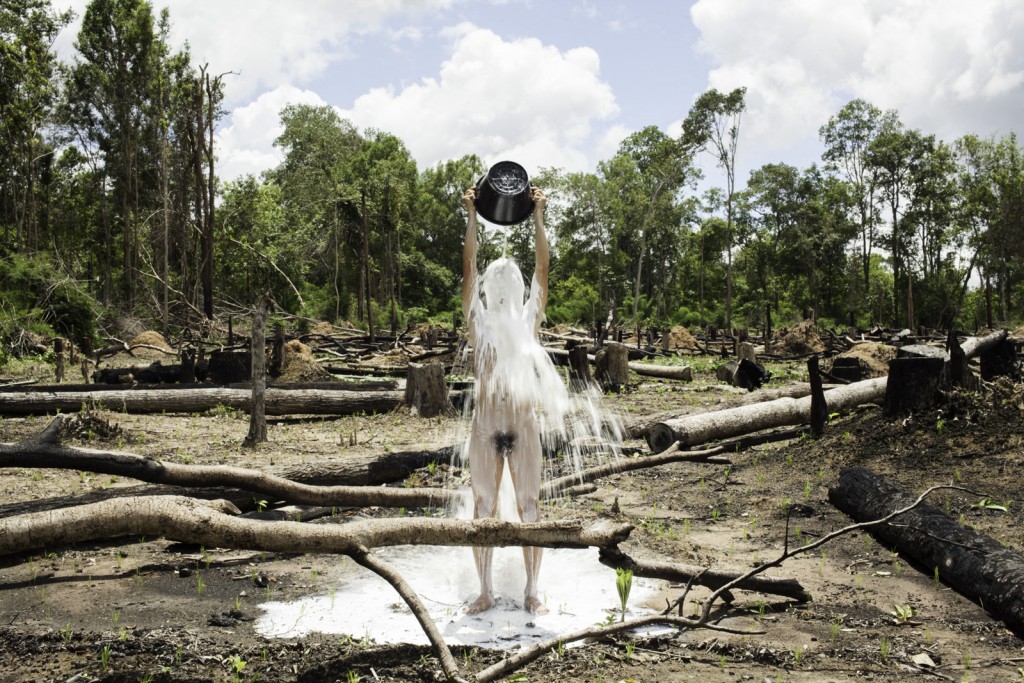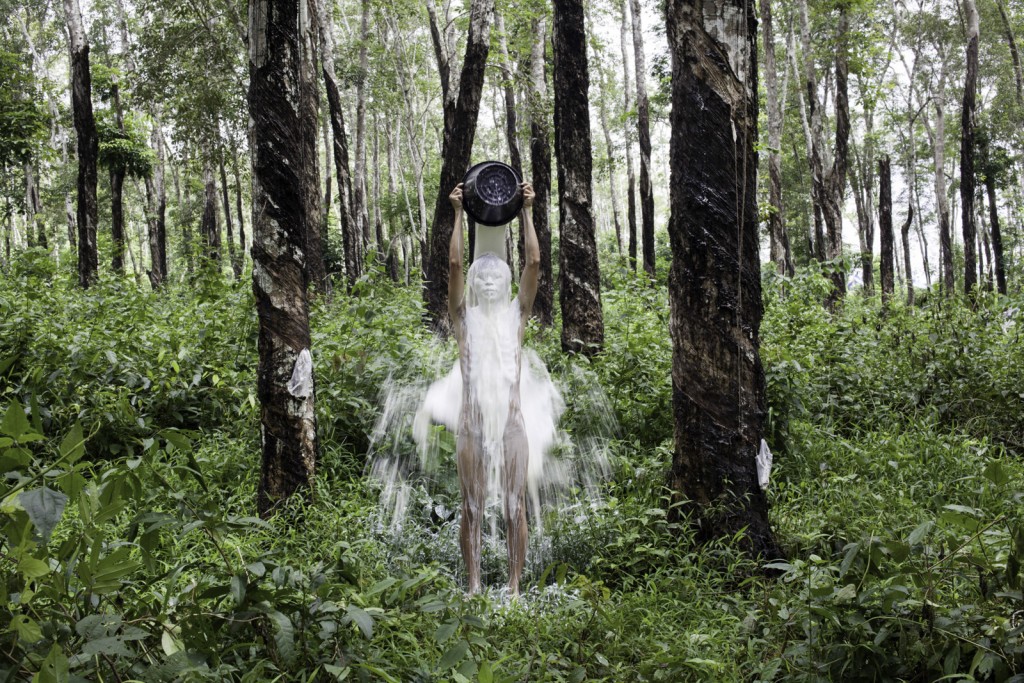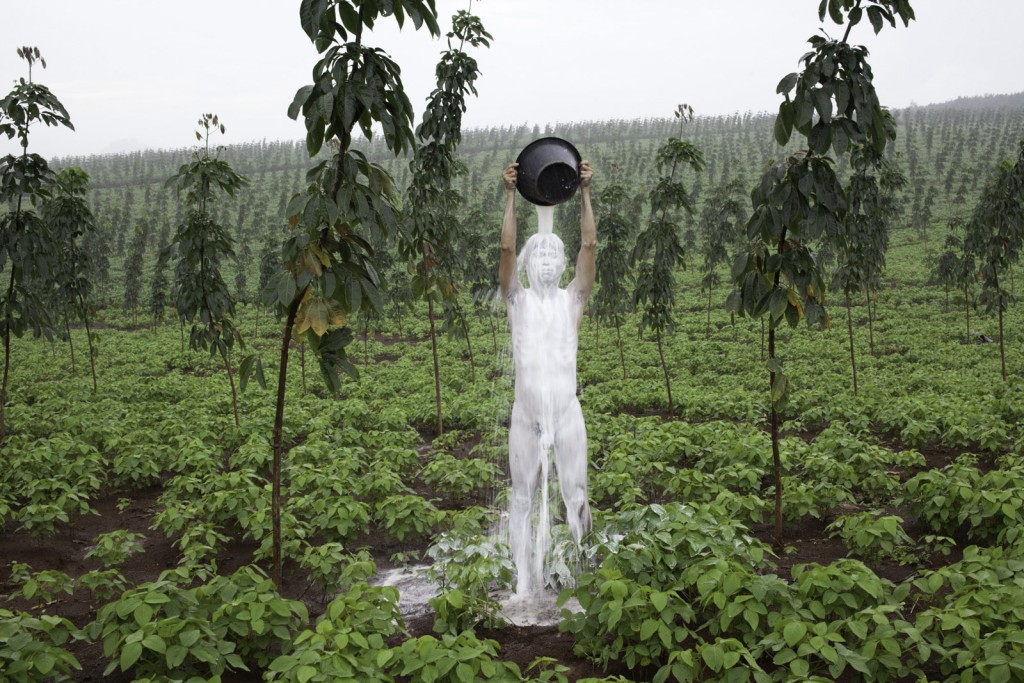Rubber Man, 2014
- Single-channel HD video, color, sound, 18’31”, Edition of 5 + 1AP
- Three-channel video installation, color, sound, 3’36’’ / 3’29’’ / 3’54’’, Edition of 3 + 2AP
- Digital Print, 80 x 120 cm, Edition of 3 +1AP; 105 x 157.5 cm, Edition of 4 + 1AP
Following on from Khvay Samnang’s previous works such as Untitled (2011), and Where is my Land? (wit h Nget Rady) (2014), Rubber Man (2015) confronts a contested landscape with poetic resistance.
For over one year, Khvay Samnang repeatedly returned to Rattanakiri, Cambodia’s northeastern highland province, to survey the altered environment—from the remaining villages to the strategic clearings, from rubber tree saplings to mature plantations.
His three-channel video installation frames these landscapes, in which the artist pours fresh liquid rubber over his body, then sets about walki ng in and out of the rati onal cash crop lines, as if a lost specter.
As the forests disappear, Khvay Samnang asks, “Where will the spirits live?
Subtly and often with humour, Khvay Samnang offers new interpretations of history, current controversial issues and longstanding cultural practices.
Khvay Samnang (born 1982, Svay Rieng, Cambodia) has a multidisciplinary practice spanning performance, photography, video and installation. Prompted by instinct and hearsay, direct experience and media sources, Khvay Samnang follows unresolved stories he believes require intervention. Employing symbolic and intentionally futile gestures, he offers new interpretations of history and contentious current affairs events that resist the polarizing language known to media and legal reports.
For Khvay’s Satellite 8 commission Rubber Man (2015), the artist responds to the specific colonial legacy of land use. French Indochina privatized the Khmer monarchy’s land 131 years ago, in 1884. Soon after, rubber seeds arrived, imported from Brazil. And soon after that, the French imported an economic equation that began the physical, conceptual and spiritual transformation of Cambodia’s nature into exploitable land. Cambodia’s first land concession was established in 1922 for a rubber plantation, which, until 1975, was the largest in the world.
The Khmer language transliterates the French transliteration, caoutchouc, of an indigenous South American word for rubber. Referred to as the “crying tree”, its latex tears drop after the tapping incision. Perhaps the most biting reference for the word rubber is as it applies to today’s intensification of the colonial concession project in Cambodia’s indigenous forests and culture: scraping away, erasing.
There are more than 20 different highland indigenous groups in Cambodia who have distinctly different cultures, languages and histories from those of the lowland Khmer population. Resident forest and ancestor spirits play a critical and omnipresent role in everyday life, which follows an elaborate subsistence cycle of planting, transplanting, harvesting, and regeneration. Threatened by multiple colonialisms, many communities in this area have been able to resist the effects of state formations that have developed over the last century in Cambodia. And their spiritual beliefs have effectively ensured forest and wildlife conservation. However, land concessions and agribusiness that favor the economic powers of today – from individuals to governments to multinationals – seem the strongest threat to their time immemorial culture.
Curator: Erin Gleeson.
Partners: The exhibition is co-produced by the Jeu de Paume
http://www.jeudepaume.org/index2014.php?page=article&idArt=2240
